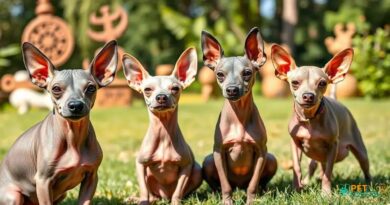What is: Anestrus in dogs
What is Anestrus in Dogs?
Anestrus in dogs refers to a specific phase in the reproductive cycle of female dogs, characterized by a period of reproductive inactivity. During this time, the female does not exhibit any signs of heat or estrus, which is essential for understanding canine reproduction. Anestrus is a natural part of the reproductive cycle and can last for several months, depending on various factors such as age, breed, and overall health.
The Phases of the Canine Reproductive Cycle
The canine reproductive cycle consists of four main phases: proestrus, estrus, diestrus, and anestrus. Anestrus is the phase that follows diestrus and precedes the next proestrus. It is during anestrus that the female dog’s body prepares for the next cycle, allowing for rest and recovery. Understanding these phases is crucial for dog breeders and pet owners who wish to manage their dog’s reproductive health effectively.
Duration of Anestrus
The duration of anestrus can vary significantly among individual dogs. Typically, this phase lasts anywhere from 2 to 10 months, with larger breeds often experiencing longer anestrus periods compared to smaller breeds. Factors such as hormonal balance, health status, and environmental influences can also affect the length of anestrus. Monitoring your dog’s cycle can help in predicting when she will enter her next heat.
Signs of Anestrus in Dogs
During anestrus, there are generally no visible signs that indicate a female dog is in this phase. Unlike proestrus and estrus, where behavioral changes and physical signs are evident, anestrus is marked by a lack of interest in mating and no swelling of the vulva. Pet owners may notice that their female dog is calm and stable during this time, which can be a relief for those who find the heat cycle challenging to manage.
Importance of Anestrus for Reproductive Health
Anestrus plays a vital role in the overall reproductive health of female dogs. This phase allows the reproductive system to recuperate and prepare for the next cycle. It is essential for hormonal regulation, ensuring that the body can effectively manage the subsequent phases of the reproductive cycle. A healthy anestrus phase can contribute to better fertility rates and healthier litters in breeding dogs.
Factors Affecting Anestrus
Several factors can influence the duration and characteristics of anestrus in dogs. These include the dog’s age, breed, health status, and even environmental conditions. Stress, illness, and changes in routine can also impact the reproductive cycle. Understanding these factors can help dog owners and breeders make informed decisions regarding breeding and health management.
Managing Anestrus in Breeding Dogs
For breeders, managing anestrus is crucial for planning breeding schedules. Knowing when a female dog is in anestrus can help breeders time mating to coincide with the optimal reproductive phases. Regular veterinary check-ups and monitoring hormonal levels can assist in understanding when a dog is ready to enter her next heat cycle, ensuring successful breeding outcomes.
Veterinary Considerations for Anestrus
If a female dog experiences an unusually prolonged anestrus, it may be a sign of underlying health issues that require veterinary attention. Conditions such as hormonal imbalances, ovarian cysts, or other reproductive disorders can affect the normal cycle. Pet owners should consult with a veterinarian if they have concerns about their dog’s reproductive health or if there are significant changes in her cycle.
Conclusion on Anestrus in Dogs
Understanding anestrus is essential for dog owners and breeders alike. This phase of the reproductive cycle is a natural and necessary part of a female dog’s life. By recognizing the signs and implications of anestrus, pet owners can better manage their dog’s reproductive health and make informed decisions regarding breeding and care.




